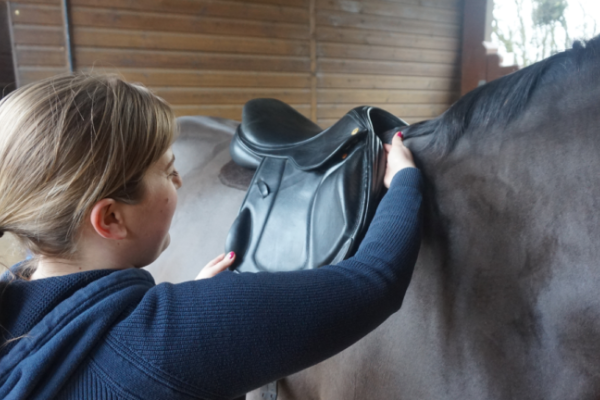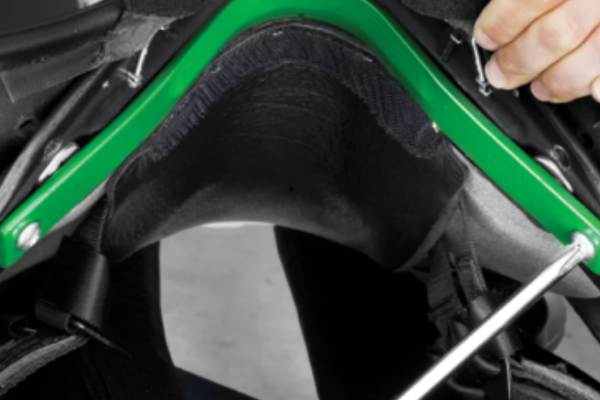How to inspect your saddle for faults
As riders, and owners, we all have a level of responsibility to look after our horses to a high standard, after all they dedicate their lives to us! The horses tack is very important, if your horses tack breaks or is not up to standard it can cause accidents, accidents can cause injuries. Today, we are focusing on the horses saddles. Saddles are one of the most expensive piece of equipment and people are fooled sometimes when they think once you’ve bought a saddle the work is done.
Here at The Saddle Bank we want to educate people so that horses are not in discomfort. We want our customers to understand that saddles can break, so we are giving you our top tips on how to inspect your saddle for faults, so you can prevent injuries from happening! Let’s be honest, its a dangerous enough sport as it is, without saddle problems! We also recommend for the saddles to go back to the manufacturer to do any adjustments, as these are the people that know the saddles best.
If you are still a bit confused about which saddle or any saddle related product is best for you why not get in touch with our friendly customer support team. Via phone on 01733 301488 or email info@thesaddlebank.com. Our lovely team are always happy to help as much as they can and provide you with the information you need to make the best decision for you and your horse.
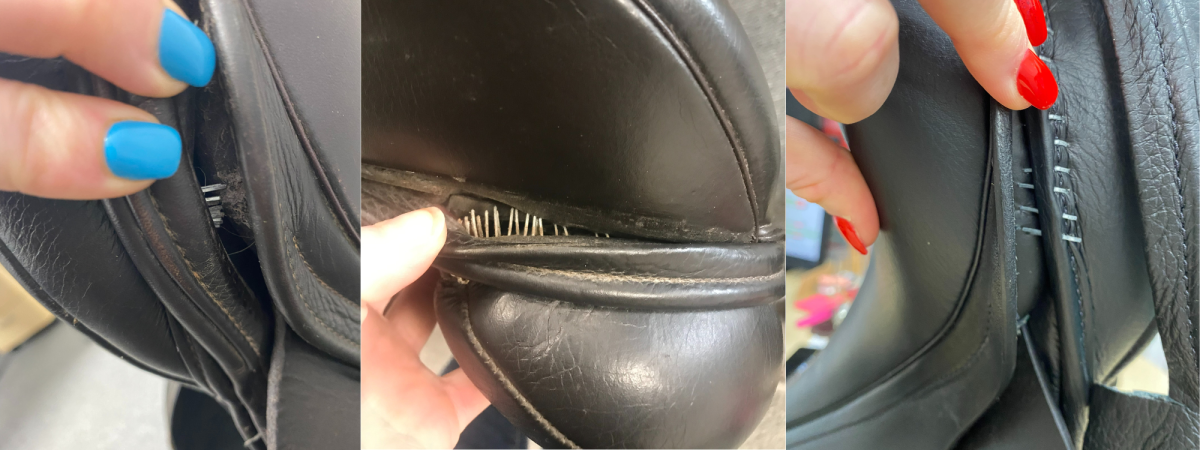
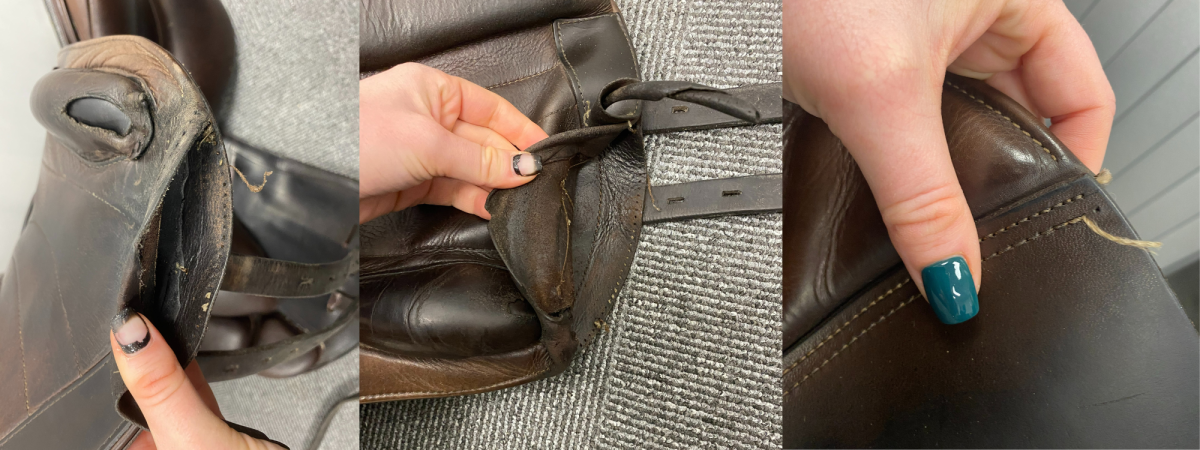
What are the different faults in a saddle?
A saddle is a relatively large piece of equipment, which lies on the horses back to give the rider more stability and comfort. For those of us that have been daring enough to ride bareback, you will know that without a saddle the horses movements feels very uncomfortable. For the horse, without a saddle the rider will feel less secure, causing the horse to not be as balanced.
There are a variety of saddle faults which customers need to be aware of.
Some of the faults include:
- Broken or twisted tree
- Uneven Panels or your panels are misaligned
- Poor flocking
- Narrow gullet channel
- Seat and skirt problems
- Stitching problems
- Girth straps or billet problems.
Now we will go into each fault into more detail, so that you know exactly what to look for.
Broken or twisted tree
The trees in your saddle weaken over time, which is something to bear in mind, this is a disadvantage if you are looking into buying a second hand saddle. Top Tip: If you are buying a second hand saddle, be sure to ask for an inspection report. Here at The Saddle Bank, we have an inspection report for every saddle we sell. A big no go is to attempt to alter a saddle which is non-adjustable. If your saddle squeaks, it could mean there is a problem in your saddles tree.
You can test to see if your tree is broken by resting the cantle into your belly, if your saddle is over-flexed in a way which is unnatural, or if you can see the tree moving in a relatively big movement, then it could mean your tree is damaged.
If your saddle has a twisted tree, it will cause the rider to sit with more weight to one side, causing a pressure points on your horse. You can see if your saddle has a twisted tree by sitting the saddle on a box and ensuring your nail heads match up in a straight line which can be compared to the cantle. The nail heads are located on the skirt of the saddle, which is at the front on either side of the seat. This can happen sometimes when your saddle is being manufactured, however more commonly it happens over time.
Misaligned or Uneven Panels
You can see the panels of the saddle by turning the saddle upside down and looking at the saddle underneath. The panels are the long straight which is directly under the seat. The panels should sit either side of the horses spine, so the rider should sit on the horses spine. When the horse moves the horses spine flex’s and expands. If a rider is sitting on the horses spine, not only will this cause discomfort it will also mean your horse cannot move to their full potential.
You need to ensure your panels are the same length and same width. Panels could also have flocking problems. If a rider is putting more weight on one side, it will cause the flocking to decrease more on one side than the other. Panels should be evenly flocked both sides.
Poor flocking
The flocking of your saddle is one of the most important parts to check. You should be looking at your saddle to see if the flocking is lumpy. Bad flocking can cause pressure points on your horse, this will lead to sore-ness. Run your hands down the panels regularly and ensure the flocking feels even, it should not be too soft or too hard.
If you are buying a second hand saddle and it is flocked with wool, our recommendation is to get the saddle re-flocked to suit your horse. Another common issue with getting a second hand saddle is that one side may be more flocked than the other, to suit the previous horses conformation.
Fun Fact: Flocked saddles should be fully stripped and re-flocked every 2 years.
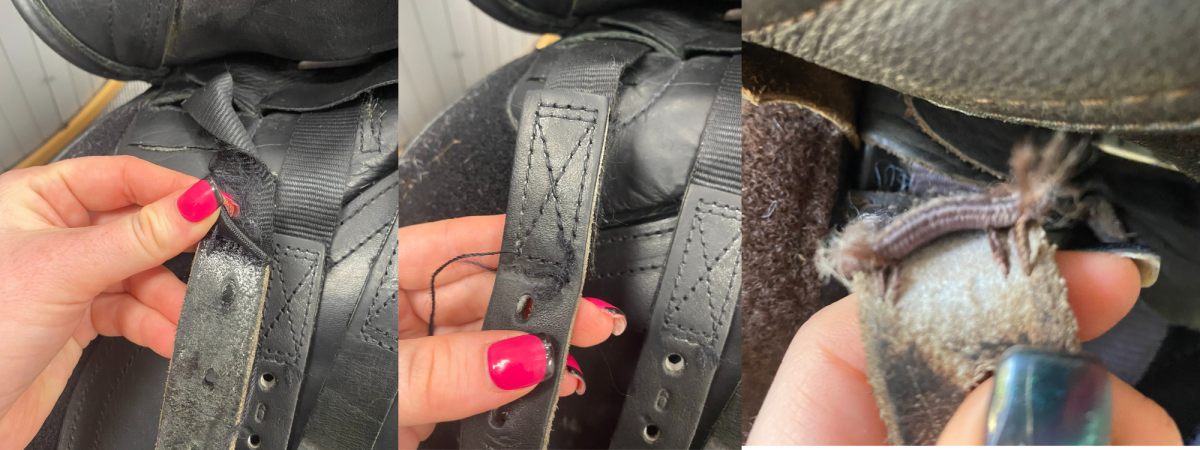
The Gullet Channel
Sticking with the underside of the saddle, the gullet channel should be straight and wide enough to give your horses spine a good clearance. However, the spine should not be too wide either as the rails of the tree are covered. The gullet channel is located on either side of the panels. Some gullet channels, particularly on the old English saddles, are incredibly narrow, since doing more research into saddles, now we understand this is a very important factor when it comes to saddle fit.
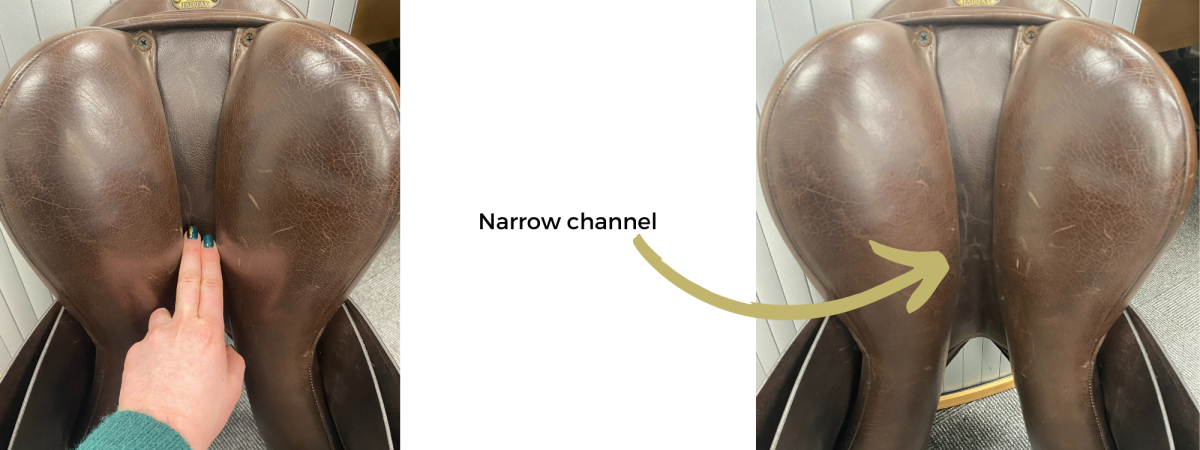
For more information on Seat and Skirt problems, Stirrup bar issues, girth straps and stitching you can sign up to the academy course. The Saddle Bank wants to give people knowledge so that you can see for yourself when a saddle needs checking. This online course covers the following subjects:
- Skeletal and muscular anatomy,
- Conformation
- How to take templates,
- Points of the saddle
- Saddle construction,
- Saddles for disciplines,
- Saddle Faults,
- Signs of a poor fitting saddle,
- The 8 Step Saddle check,
- Girthing arrangement and
- Accessories
The academy course is a fantastic way to enhance your knowledge, while in the comfort of your own home. We also have courses in horse management and we do a saddle fitter pathway introductory course. Check out this link to take you straight to it today.











